Evgeny Kanevsky: “The state did not see a big future of small equipment”
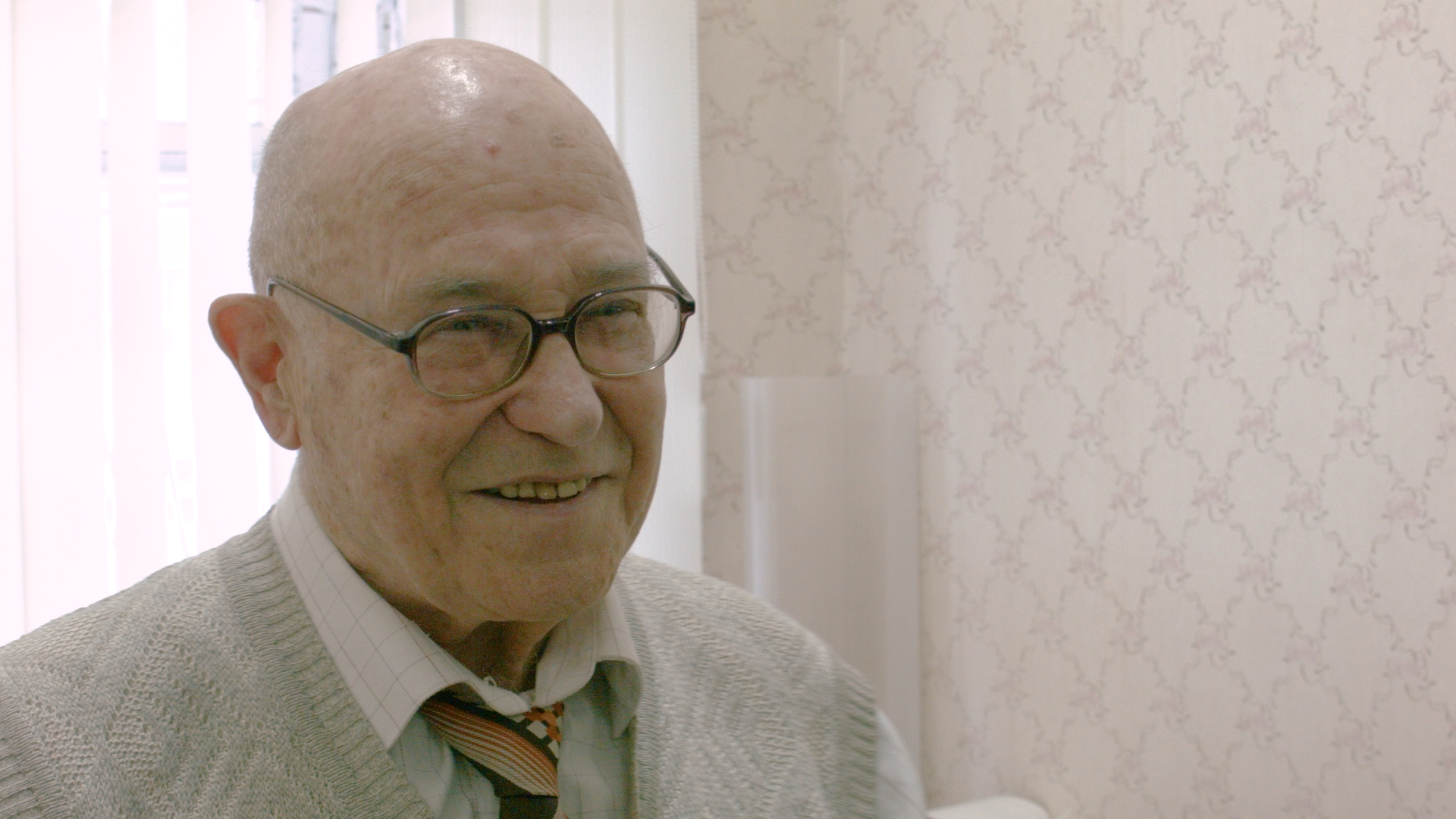
We decided to supplement the DataArt museum collection with interviews with people who influenced the history of IT. Last time we talked with Sergey Zonov , the creator of one of the main clones of the Spectrum. This week, our hero is a leading researcher at the Institute of Regional Economics of the Academy of Sciences of Russia Yevgeny Alexandrovich Kanevsky, one of the scientists who stood at the origins of Soviet computing technology. Now he is engaged in text analysis systems, and in an interview he told how in the 1960s he developed the small-sized Vega and EDVM, and in the 1970s - Iskra-226.
1958: service group
- I got into the system of the Academy of Sciences in 1958 after graduating from the Physics Department of the Leningrad University. I had another specialty in general - high-frequency equipment, klystrons, magnetrons - but I was persuaded: “The computing technology is just beginning, everything is ahead.”
')
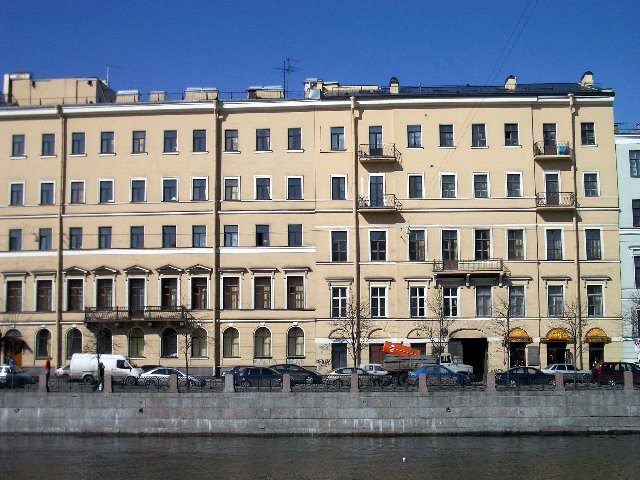
Fontanka Embankment, 27. Here and now is the St. Petersburg branch
Mathematical Institute. V.A.Steklova RAS
Our institution changed its name several times. Originally it was the Leningrad branch of the Mathematical Institute of the Academy of Sciences (MIAN). When I arrived, a computer center was just organized here. There are very few employees - two or three people. We were immediately sent for an internship at the University, which received one of the first production machines "Ural-1". We found ourselves there with colleagues, with whom we had previously studied. They mastered the car all together, and then went to Penza to get theirs. The three of them are a girl and two guys.
- What did the process of receiving look like?
“They installed the car, launched several tests and said:“ See, it works! Now we disassemble it, pack it and ship it to you. ” They brought to Leningrad: “Take it!” And we ourselves, a few people, without any movers dragged these huge heavy blocks. They brought in a large hall, unpacked, collected, turned on, and she earned.
The car was big enough. (It occupied 70–80 square meters. - Approx. Ed.) With a height of about two meters. In front were two pedestals. She worked in a binary system. Relatively small by today's standards, the memory on a magnetic drum, which is constantly spinning. Input - from punched tape. Performance - about a hundred operations per second. Set the task for two to three hours, the most unpretentious.
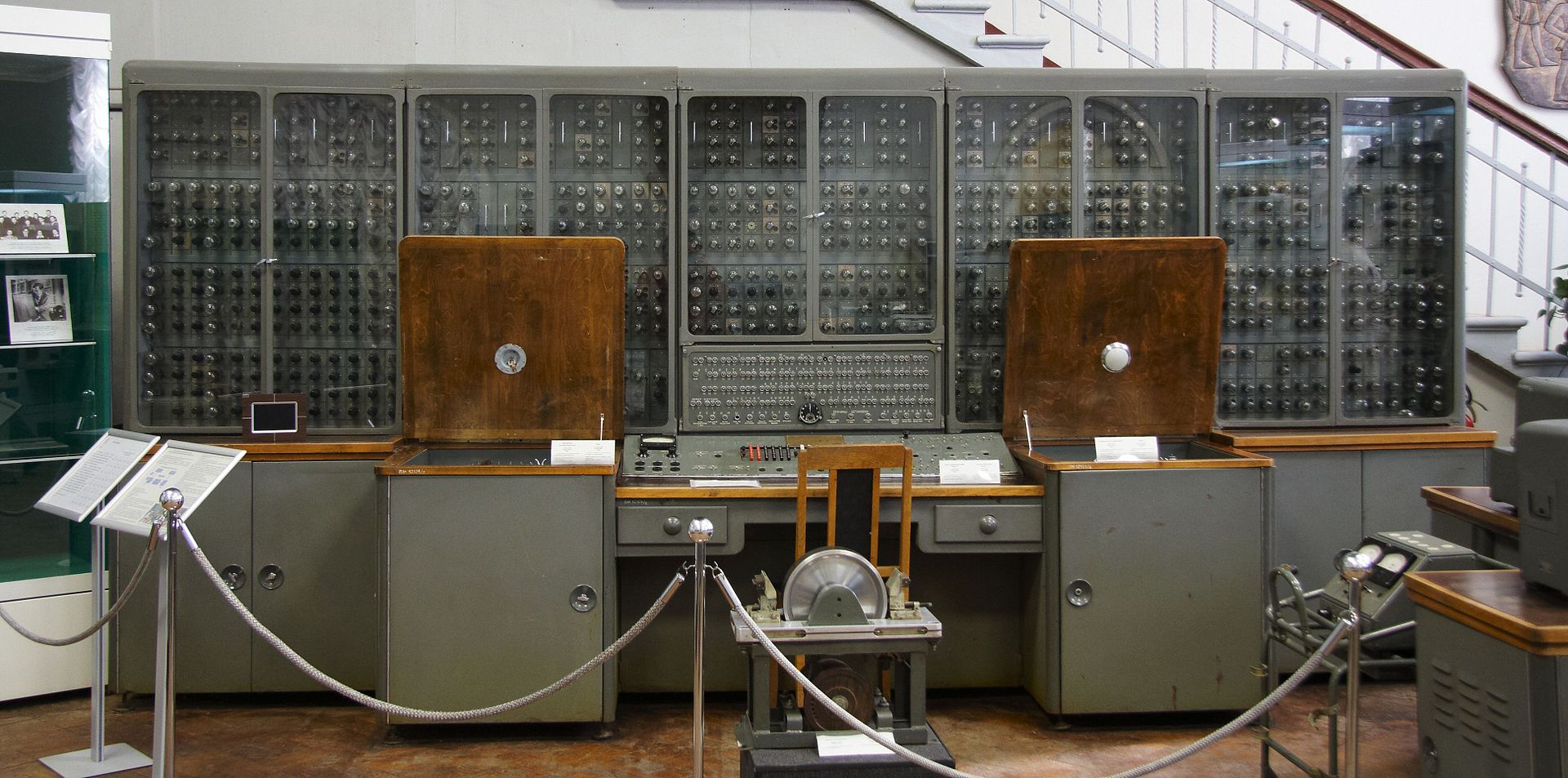
"Ural-1" - the first serial Soviet computer
- Who put it?
- Mathematics. Since the performance is very small, there were relatively few tasks. The car worked around the clock in three shifts - from 8 to 16, from 16 to 24 and from 24 to 8. I got into the service group. Two on duty, at night there were no buffets, of course. The tea itself was brewed, that's all. Rested in the next room, designed for practicing sambo. If everything was in order, it was possible to take turns sleeping for an hour or two on the mats.
- What were your responsibilities?
- We made sure the machine worked. It failed quite often. It was necessary to determine the faulty element, pull it out of the connector using special tongs and replace it. Then the faulty elements dealt with a separate group of electricians.
Periodically there were problems with the drum. I do not know how the others, but in our car he was very sensitive to the temperature. If it's hot, I had to open the window. If it is cold, close.
- What tasks did the car solve?
“We didn't know that.” Young boys and girls who just graduated from the institute - at first we didn’t understand anything at all in this matter. They only knew why it does not work here, but here it is. Well, how to fix.
- Often you were woken at night: “Get up, the car broke down”?
- It happened through time, the normal situation. Sometimes we worked on Saturdays and Sundays - when mathematicians persuaded us. Often, when a good company was going, they sat down to play preference. But if something broke, the cards aside - and repaired.
This went on for a year and a half. But when I was persuaded to come here, they invited me not to maintain the car, but to scientific work. Finally, the institution fulfilled its obligations: I was released from service. First they gave to finish the work that someone else started. Nothing interesting happened - I kind of wrote an article, but it did not go anywhere. And then we organized a laboratory for the development of small-sized machines under the leadership of Vladimir Borisovich Marakhovsky.
1960s: Vega
- After the "Ural-1" in the USSR appeared computers "Minsk" and BESM. If it was necessary to do something simply and quickly, so-called electromechanical machines were used. Their best examples were German: Mercedes 20-bit and 12-bit Rheinmetall. The Kursk plant produced the VMM-2 - its own version of the Rheinmetall, but, unfortunately, of substantially lower quality. They didn’t give a good steel - it was only for the military, and the Germans made Swedish, which was considered the best at that time.
By 1960, Marakhovsky and the company (engineers of the Leningrad branch of the Mathematical Institute of the Academy of Sciences. - Editor's note.) Developed a machine on a relay called "Neva". It seems to have launched a series in Penza, but it was neither shaky nor shaky. At this time, the simplest transistor elements appeared, and we contacted the so-called ferrite-transistor element. It was a small cube, from which a transistor jutted from above. We managed to create a trigger of three such elements that can store information, and the idea arose to make an electronic machine - like Rheinmetall or Mercedes. A year in 1960 or 1961, we started this business.
- What were the need for small cars?
- To replace the "Rheinmetall" and "Mercedes". Very often, a person needs to calculate something - multiply five numbers, divide, etc. It is completely uninteresting to do this on the slide rule. Even before the war, there were arithmometers on which to turn the handle, and, shifting the carriage, to make calculations. Three times I turned the handle - three times I folded some numbers. I moved it, twisted it twice - it means that you will already have multiplication by tens. True, it was impossible to divide.
“Rheinmetall” and “Mercedes” did all four actions, but these machines were not enough. We, in my opinion, had one copy of both of them, and we had to count often. Even today, if a mathematician makes up some kind of task, he always needs a preliminary calculation, but for him you need to have something at hand. About the possibilities of personalization then, of course, no one suspected.
As a result, we made a car with a sin in half. They called it “Vega” by the name of the star, although evil tongues asserted that by the names of the authors: Vladimir, Yevgeny and Galina (Galina Ivanovna Menderskaya - Approx. Ed.), According to the first letters, they were formed into VEGA. But then we did not even think about this.
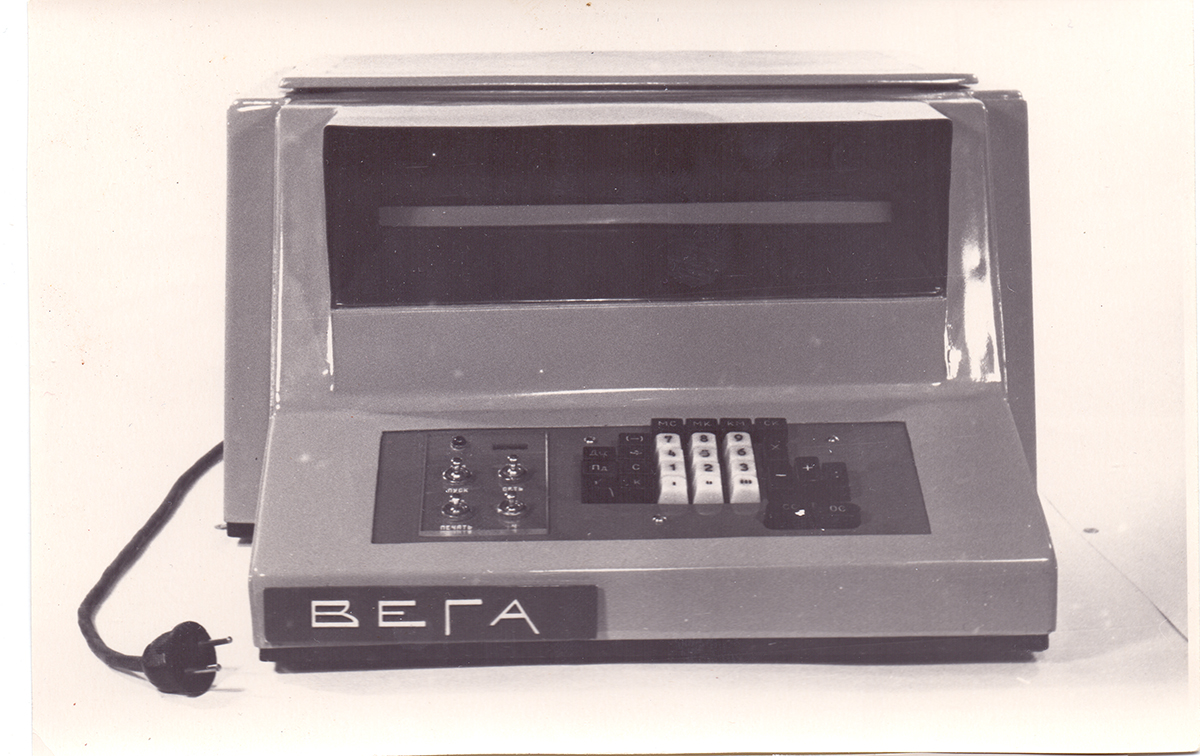
"Vega". Prototype
- What did Vega do?
“It could add, subtract, multiply, divide, and extract the square root — something that no electromechanical machine did. She had 20 decimal places and, as we called her, “natural comma”. That is, it was possible to recruit, as a person writes: “Two comma five multiplied by three comma thirty-eight ...” This was the result. Some plant undertook to make for us an electroluminescent indicator, to which about 25 volts was applied, and we developed the first eight-element matrix.
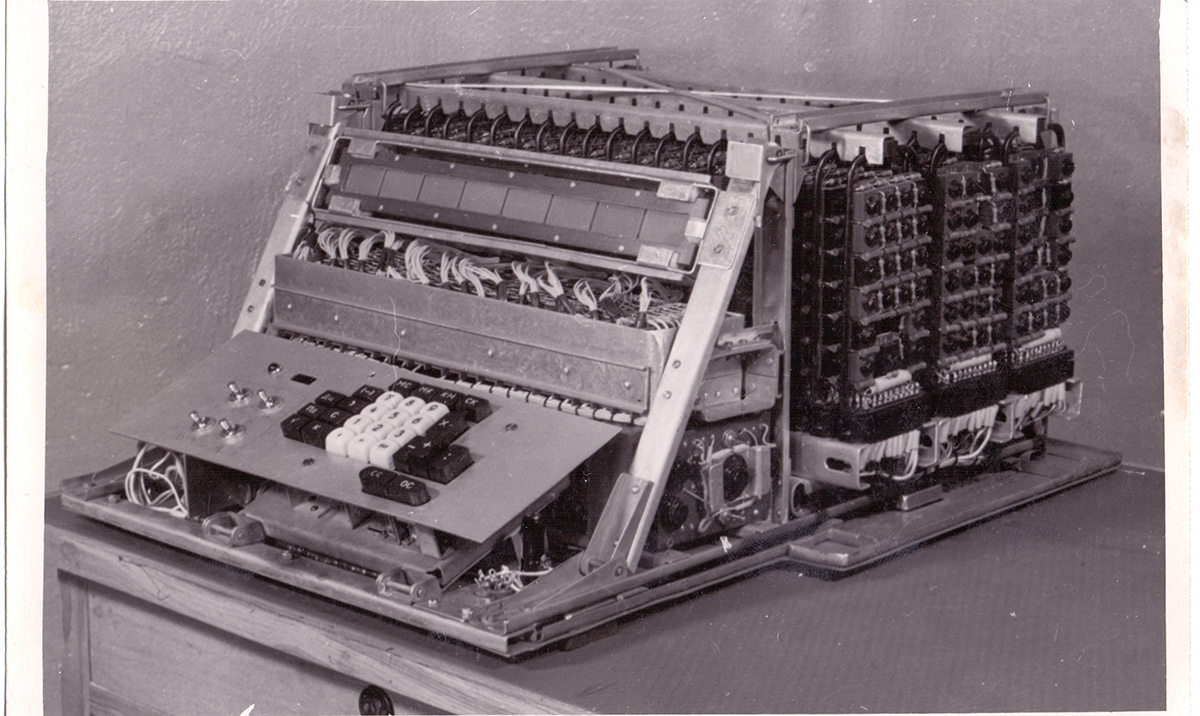
Vega prototype inside
- How much time was spent on the development of "Vega"?
- About a year and a half. Worked about five people. Three main designers: Marakhovsky, Kanevsky, Menderskaya. Arkhangelsky left us at once and almost did not work on Vega. Another person was involved in the elements - he was involved in the development of the trigger. Everyone did some piece of their own.
- How to celebrate the birth of "Vega"?
- I do not remember, it was too long. But in those days you could safely buy a bottle of wine, bring it to work, and drink half a cup or a cup before going home. We bought, as a rule, dry - more than anything, we did not drink anything special then.
- What did you need to do to start mass production of Vega?
- The Ministry of Devices, Automation and Control Systems (PSAISU) was involved in such matters. When we got there, it turned out that we have competitors - a similar electronic machine was developed by friends from the University, with whom we had practice in due time. Well, Penza, realizing that the relay is not very good at it, also developed her own version. They arranged a competitive commission, talked and argued. In the end, it was announced that the two cars are very good - ours and the university one. Penza machine is not interested, we also offered to look for the plant itself. Here the government made a very big mistake by not grabbing these cars. For the sake of them, it was worth quitting everything else.
- Have you tried to convince the leadership?
- No one was listening. We say: "We must!" And they answered: "We are busy with others, there are no free capacities. All have a hard plan. ”
Our colleagues from the University went to Minsk and tried to do something there, but the car did not come out in a series. Marakhovsky and I went to Kursk. They released VMM-2 and tried with all their might to fight it off, because they could not get it - there was no good steel. The plant turned out to be “Vega” completely unprepared, because it specialized only in mechanics. They had not a single electronic engineer - a normal electrician. Director Karchevsky was not interested in anything a year before retirement. We communicated with the chief engineer Nikolaev. Imagine, two young guys came and say: “Rebuild the plant!” And his people are working, the salary must be paid ... But he took the risk. A group gathered - several installers and we. Constantly on business trips to them went. For the first year of eight months I spent there. Together we packed up the car, set it up and started it.
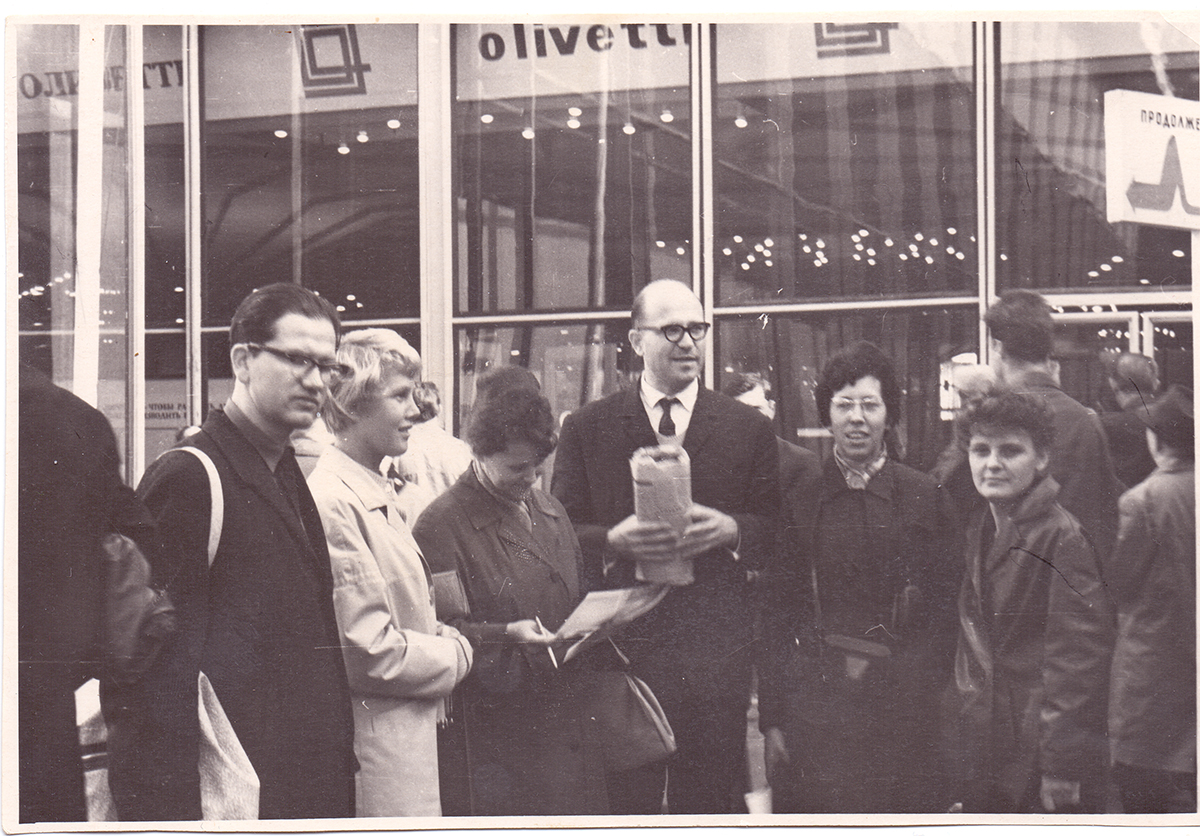
Yevgeny Kanevsky with colleagues at the Exhibition of Economic Achievements, 1966 (?) Year
- What difficulties have you encountered?
“For starters, you had to get transistors that were not sold in large quantities in the store. Ferrite-transistor element - what is it? There is a P15, P16 type transistor and a small piece of ferrite in the form of a ring on which a very thin wire should be wound. Wound mostly women as people more calm and restrained, with a thin needle. It was necessary not to tear the wire, then carefully solder the ends to the conclusions.
Transistors needed to be selected and checked. It was possible to receive them by military acceptance, then on each transistor the gain range was indicated. If it was very small or extra-large, it would not do for us - such elements did not work.
The plant with great difficulty managed to break through the production of "Vega". Power and experience was not enough. At this time in 1961, a large number of different cars began to appear around the world - in Germany, Italy, and Japan. The plants doubled their output every year, and Kursk could increase the volume only by 20%. Each car was distributed by the ministry, everyone wanted to have it - it worked.

"Vega". Factory option
- Everyone wants, but nothing is being done to expand production?
- These are disadvantages of a planned economy. Some say that they want to have, the second answer: "You do not need anything, you will manage, live, as before." The state did not manage to see a great future with small technology. I saw a big one: the plant was one, the plant was different ... Then they began to make medium-sized machines - “Setun”, “Razdan”. Academicians connected to this Ukrainian. But to put on the table, double-click and get some result - this was not.
ADVM
- After some time, the military turned to us. They say: "You seem to have a car like nothing, but we have topographers who die without trigonometric functions." They need to consider trigonometry, but not on anything. There are only Bradis tables and a slide rule, the accuracy of which is very small. We immediately asked the factory. They identified Ufa instrument-making, at that time producing some instruments for aviation. And we made an electronic 10-key EDVM computing machine. She had 16, not 20 discharges. The military said it was enough for them.
- What could edvm do?
- If Vega had only three registers (it did addition and subtraction on two, the third was used in multiplication for accumulation and for calculating the square root), the EDVM had four. In addition to addition, subtraction, multiplication, division, accumulation, she calculated the sine and arctangent. Making trigonometry was not easy. At this time, large cars have already appeared, in addition to the Ural-1. We received BESM-6 and with its help began to look for a technique. Usually trigonometry is considered different - more precisely, short and fast. But for this we need more than four registers, which immediately increased the car in size, but we really did not want to.

General view of EDVM
We started the car and, at the request of the military, made an adapter to it, so that the standard STA-2M telegraph unit could be connected. This was necessary in order to transfer the results of the calculations to another place via the communication line - as if to send a telegram immediately. In addition, the results could be printed. In fact, the car had a printer, only very uncomfortable.
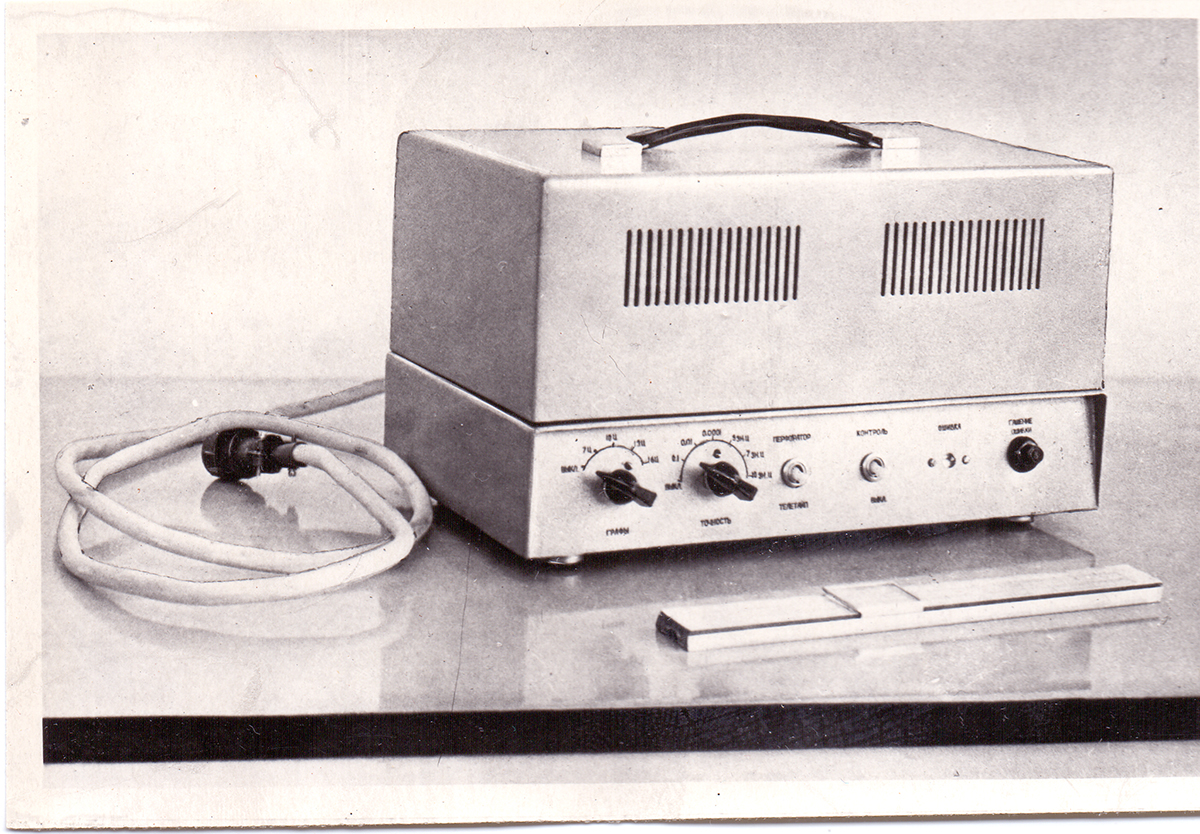
Communication device for ADVM
The plant launched the car in the series. After some time, fluorescent indicators were replaced by neon lamps, finding it more reliable. Until what time the Vega existed, I don’t know, and EDVM-P (printed version) was used by the troops in the mid-1980s. Unlike any calculator, it worked at a temperature of from 0 to 40 degrees. I must say, 0 - the temperature is generally very bad, it produces condensate and the most unpleasant things happen to the instruments.
Copyright certificates
- When we made Vega, we wrote applications for copyright certificates. They were not given to us for a long time, in the end, when the plant had already started production, the chief engineer called the ministry. We were called to Moscow, began to understand. It turned out that this is the first certificate for an electronic machine. We were still asked: “Why did you put everything in one pile? It was necessary to write 10 small applications - it would be easier for us. ”
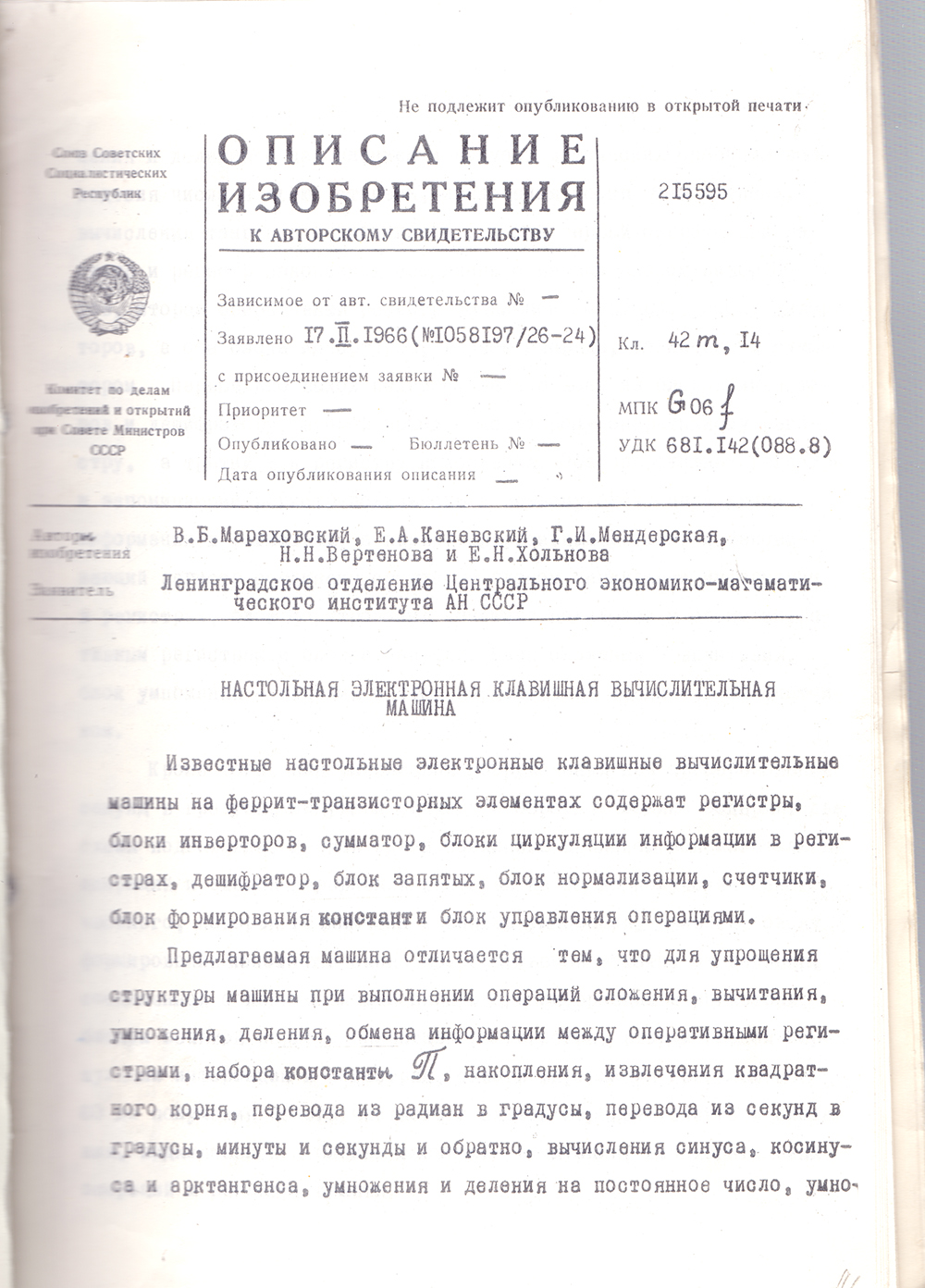
Copyright certificate dated 1966
When the car went into series, according to the law of the Soviet Union, we began to receive money.
- On the last page of your certificate it says: 560 rubles for an invention. Then another 2113 rubles, 960 rubles. Is that a lot of money?
- Yes. A bottle of wine then cost 2 rubles 12 kopecks. Salary I had 120 rubles.
Then we received three patents abroad - in Germany, Italy and France. If they wanted to use the license, we would get a lot of money in foreign currency. But they did not want to.
- Maybe they already have something of their own?
- Not. When we did the first Vega, they had cars that performed four actions. The root of the square at the time no one removed. When we did an EDVM, cars with a square root appeared, but there was no trigonometry anywhere. In this sense, we are ahead of them.
Then we received copyrights at the EDVM and also some money, and already in the 1990s we learned that as early as the 1980s military exercises took place in the GDR, and topographers used the EDVM-P. It turned out that this is the best machine: it could transfer data by telegraph, worked from the battery and was reliable. It struck us, we thought that it had long been gone.
1970s: Iskra-226
- Our colleague, Heinrich Valerievich Lezin, began to engage in a new industry - microprogramming. Then we started working on the Iskra-226 machine. They did it on the instructions of the same ministry PSAISU. Then the USSR bought American cars "Wang-2200". We decided that you need to have your car with the exact same command system. The ministry immediately said that there would be an institute. It was already in the 1970s.
- That is, in the 1960s you yourself were looking for a factory, and here the state already understood the perspective?
- Yes, only time has gone a lot. Abroad was already "Wang-2200", began to make machines of this series, the first microprocessors appeared. Very small, weak - by 4 digits, by 8. We began to make the machine already on integrated circuits, and not on ferrite-transistor elements.
From "Wang" we took only the command system. They did everything in their own way, received copyright certificates in quite large quantities. We did not repeat anything not only programmatically, but also technically. If we began to repeat, we would have to buy a license, but the government would not want to.
The car produced the same Kursk. In terms of size, it was quite large; it had an additional memory on a magnetic drum of 5 megabytes in size. The drum is Bulgarian, the seal is German, GDR. Long-term memory was only on large-format diskettes - now there are no such. It was possible to write in the languages "Fort" or "Basic".
- Who worked at Iskra?
- Many people, mostly math. An accountant could also work on relevant programs. This car had a very small screen in the form of a tube, a keyboard of the same type as it is now on personal computers, games, some kind of entertainment.
- What kind?
- The simplest are some horoscopes, races ... They were taken because the Wang system existed. Most likely it was a copy. We had no direct relation to this topic, and playing with a small screen was not very interesting to play.
- Why it was in the 1970s that the state understood the importance of what you do?
- I do not know. Having made Vega first, then EDVM, we did not promote them at the top, we went from the device. The state, as it were, realized that something was missing because the whole world was developing in this direction. If we compare the number of cars that were produced before the appearance of calculators, we and other countries, these are completely different numbers. And not an order of magnitude, but two, three. Abroad, the issue grew instantly, calculators appeared at any cash desk.
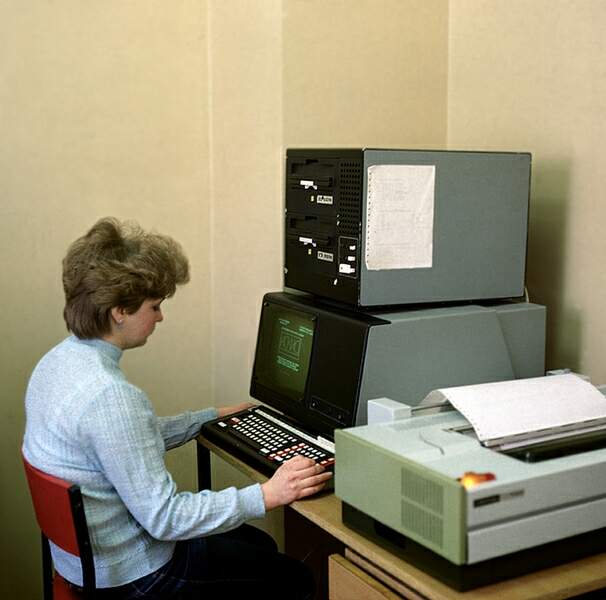
The appearance of "Spark-226"
Further, our name "electronic-keyboard computing machine" (ECM) disappeared. “Spark-226” we called “software-controlled electronic-keyboard computing machine” (PEKVM) - it also went away. The little ones began to be called calculators, their release was adjusted and we have in quite a large number. But the average did not produce. The Institute for the Development of Electronic Machines, with which we created the Iskra-226, together with Kursk began to make a number of machines called the Iskra - Iskra hundred with something - for economic calculations. A series of “Iskra-200” appeared, which later degenerated into a copy of a modern personal machine. Besides Kursk, nobody has made them here, and abroad - everywhere and in large quantities. As a result, they began to simply buy them in Russia.
- At what point was the lag so that it was already impossible to catch up?
- When personals appeared with us. In the era of perestroika, when the salary became really bad, for two years I went to teach computer science to school. For practical classes at the 9th grade there were devices that emulated simple BASIC commands. I talked about "BASIC" what to do with it. Then the guys did a little program. Each - only a remote with display and dialing. And the next class was already working on the staff. And most of them were Kursk-made. Then the degree of integration became such that we began to lag behind, and the gates opened, which were previously closed.
Source: https://habr.com/ru/post/450198/
All Articles